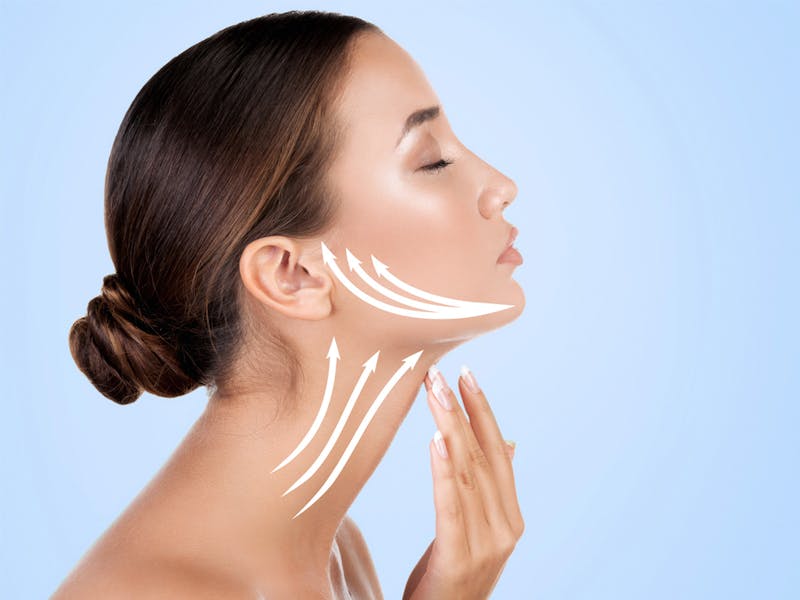
In the pursuit of a more youthful appearance, a lower facelift can be a transformative procedure. It helps address issues like excess skin, double chin, and nasolabial folds, rejuvenating the facial skin. However, to fully enjoy the benefits of this cosmetic surgery, a smooth and successful recovery is crucial. In this comprehensive guide, Dr. Panossian will explore the essential tips and insights for a seamless lower facelift recovery journey.
Understanding Lower Facelift Surgery
A lower facelift is a surgical procedure designed to address signs of aging in the lower face. It targets loose skin, sagging tissues, and the dreaded double chin. During the surgery, incisions are made strategically, and excess skin is carefully removed, resulting in a more youthful and rejuvenated appearance.
The surgery typically takes a few hours, during which you will be under anesthesia to ensure a pain-free experience. Dr. Panossian, a renowned expert in cosmetic surgery, will perform the procedure with precision, focusing on achieving the best possible results.
Preparation for Facelift is Key
Before your lower facelift Pasadena, proper preparation is essential. Consult with Dr. Panossian to understand the procedure thoroughly. Follow any pre-operative instructions provided, such as discontinuing certain medications and avoiding smoking, which can hinder the healing process.
It’s also crucial to prepare mentally and emotionally. Understand the expected outcomes and potential side effects to set realistic expectations for your recovery journey.
Day of the Facelift Procedure
On the day of your surgery, you will arrive at the clinic, where the surgical team will ensure you are comfortable and ready. Once under anesthesia, Dr. Panossian will make precise incisions, following the predetermined surgical plan. Fat and excess skin are removed, and the underlying tissues are tightened to create a more youthful contour.
Immediate Post-Facelift Care
After the procedure, you will be monitored in a recovery area to ensure your safety and comfort. Expect some minor swelling and discomfort, which is entirely normal. The initial healing process begins here, and you’ll be provided with detailed post-operative care instructions.
Tip #1: Managing Pain and Swelling
Pain medication will be prescribed to help manage any discomfort during the early stages of recovery. To reduce swelling and discomfort, apply cold compresses throughout the day. Place a gel pack or ice pack onto the area for 10-15 minutes and remove for 15-20 minutes. Repeat this cycle throughout the day for optimal results. It’s essential to stay ahead of any pain to ensure a smooth recovery.
Tip #2: Using Compression Garments
Wearing compression garments, as recommended by Dr. Panossian, has two main benefits. First, they reduce swelling and improve blood flow to the treated areas, which speeds up healing. Second, these garments offer gentle support and help maintain the desired shape of the lower face and neck.
Tip #3: Treating Incision Site and Scars
Taking proper care of incision sites is important to reduce visible scarring. Dr. Panossian recommends following his guidance on facelift scar management, which may involve using silicone gel or sheets. These products have been shown to greatly enhance the appearance of scars over time.
In addition, maintain the incision site clean and dry. Keep the area clean and free of dirt or debris that may irritate the wound. Make sure to gently clean the area daily with a cleaning solution prescribed by Dr. Panossian. Also, avoid making any sudden facial movements or expressions that can tug on the incision sites.
Tip #4: Avoid Abrupt Head Movements
Keep your head elevated while you are recovering from a lower facelift. It is recommended to use extra pillows when sleeping and avoid any unnecessary head movements. This can help reduce swelling and minimize the chances of pulling on the incision sites. Additionally, if you need to look up or down, do so slowly and carefully to avoid tugging at the skin around the incision sites.
Tip #5: Resuming Daily Activities
During the healing process, it is advised to gradually resume light activities while being mindful of your body’s signals and avoiding excessive strain. Pasadena facelift patients should allow their bodies to heal naturally. Depending on each individual, it is common to be able to resume work and social activities within a few weeks.

Tip #6: Exercising
While regular exercise is essential for overall health, it’s crucial to avoid strenuous activities during the initial weeks of recovery. Dr. Panossian will provide specific guidelines on when it’s safe to resume your regular exercise routine. Patience is key to a successful recovery.
Tip #7: Be Careful of What You Eat and Drink
Hydration is crucial for recovery. Drink lots of water. Consuming nutrient-rich foods will aid in faster healing and supply essential nutrients. Prioritize fresh fruits, vegetables, lean proteins, healthy fats, and whole grains. These foods guarantee a sufficient intake of vitamins and minerals. To support the healing process, avoid processed foods and sugary snacks.
Tip #8: Do not Expose Yourself to Direct Sunlight
After undergoing a facelift procedure, it is advised to stay indoors and avoid going outside for the first few weeks of recovery. It is important to keep the windows closed during this period. Once you have been permitted by your doctor, it is safe to go outdoors while taking necessary precautions.
Protect your healing skin from the sun’s harmful rays, as sun exposure can hinder the healing process and potentially result in complications. To do so, make sure to use broad-spectrum sunscreen and wear protective clothing, such as a wide-brimmed hat, when going outdoors.
Identifying Visible Signs of Healing
As the days and weeks pass, you will start noticing visible signs of healing. Swelling will gradually subside, and a more defined jawline and neck will emerge.
Remember that after your surgery, it is important to meet with your surgeon for a follow-up. They will check how your healing is progressing and give you any necessary advice. Once the surgeon says it is okay, you can start getting back to your normal activities like exercise, work, and socializing. Recovery time differs for everyone, but following medical instructions will make your lower facelift recovery smoother.

Maintaining a Youthful Appearance
To maintain your youthful appearance post-recovery, consider non-surgical treatments and skincare routines. Dr. Andre Panossian can provide recommendations tailored to your unique needs. These treatments can complement the results of your lower facelift and help you enjoy a youthful look for years to come.
Combining Facelift with Other Surgical Procedures
Achieving the most desired outcome may require combining a lower facelift with other facial procedures, such as a neck lift, eyelid surgery, and brow lift. A neck lift can help reduce the appearance of loose skin and wrinkles on the neck area, while an eyelid surgery helps to minimize sagging or drooping eyelids. A brow lift can restore an overall youthful appearance by lifting the eyebrows and smoothing away any forehead wrinkles. These procedures are often performed along with a lower facelift to give patients more comprehensive results.
Natural Aging Process vs. Results
A lower facelift in Pasadena CA can provide long-lasting results, but it can not prevent the natural aging process. To keep your rejuvenated appearance, maintain a healthy lifestyle. This involves following a balanced diet and skincare routine. Dr. Panossian can give you personalized recommendations.
Schedule an Appointment with Dr. Andre Panossian
If you’re interested in a lower facelift, make an appointment with Dr. Andre Panossian. You can take the first step towards feeling more youthful and confident. Dr. Panossian and his team will support you throughout the process and make sure your recovery goes smoothly. Start your transformative journey today and begin the path to a more youthful version of yourself.


